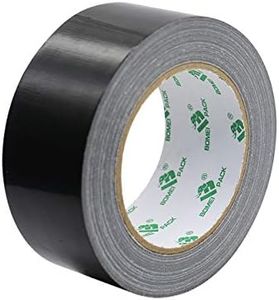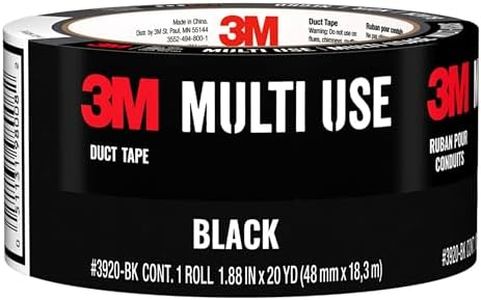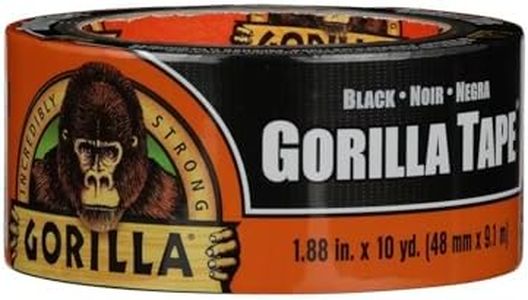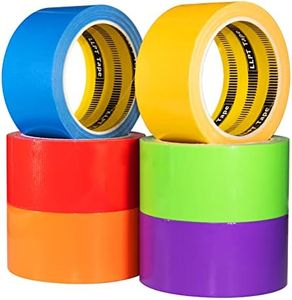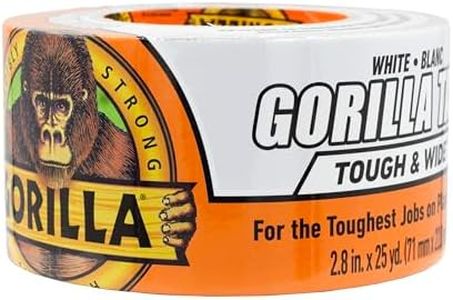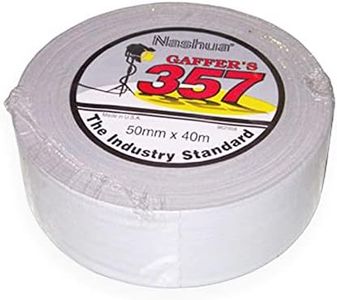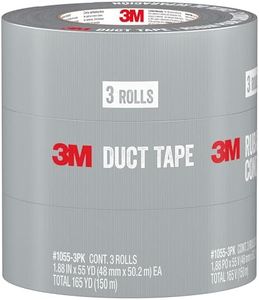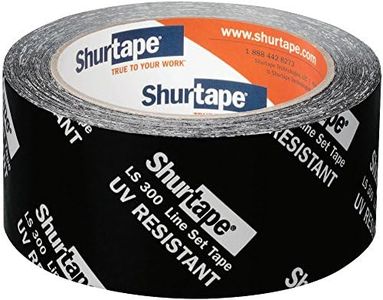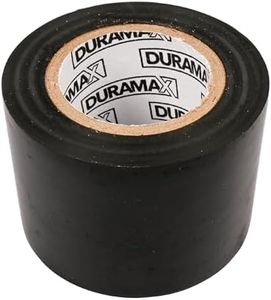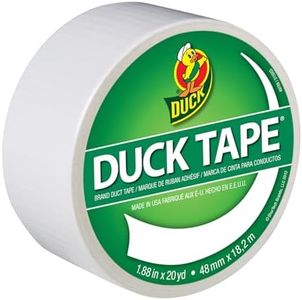We Use CookiesWe use cookies to enhance the security, performance,
functionality and for analytical and promotional activities. By continuing to browse this site you
are agreeing to our privacy policy
10 Best Duct Tapes
From leading brands and best sellers available on the web.Buying Guide for the Best Duct Tapes
When picking the best duct tape for your needs, it’s important to think about how and where you’ll be using it, as duct tapes can vary a lot in strength, stickiness, and other features. By understanding the main specifications that set them apart, you can more easily find a tape that matches your intended purpose, ensuring you get a product that works well without disappointment. Pay attention to the details, as the right duct tape can help with repairs, crafts, construction, or even emergency fixes.Adhesive StrengthAdhesive strength refers to how well the tape sticks to surfaces. This is crucial because if the tape doesn't stick securely, it won't be very useful for most tasks. Light adhesive strength works for temporary or light-duty jobs, like arts and crafts or bundling cables. Medium strength is good for general repairs around the house, while high adhesive strength is best for demanding jobs like sealing HVAC ducts, waterproofing, or outdoor fixes. Think about whether you need the tape for quick, light uses or if you expect it to hold up under stress or in challenging environments—this will help you decide the necessary adhesive level.
Backing ThicknessThe backing thickness is about how thick the fabric or material of the tape is, usually measured in mils (thousandths of an inch). Thinner tapes are easier to tear and wrap around small objects, making them good for small repairs and crafts, but they're less strong and durable. Medium-thickness tapes offer a good balance for everyday household uses. Thicker tapes are more heavy-duty and resist tearing, making them ideal for jobs that require toughness, like outdoor repairs or patching materials under stress. Choose the thickness by considering whether flexibility or strength is more important for your job.
Water ResistanceWater resistance defines whether the tape can handle getting wet or be used in damp environments. Some duct tapes are only slightly water-resistant and are best used indoors, while others are designed to withstand heavy moisture and rain. If you plan to use the tape outside, in bathrooms, or for plumbing quick-fixes, it's worth looking for good water resistance. If you only need it for indoor, dry applications, standard resistance should be fine.
TearabilityTearability is about how easily you can rip the tape by hand versus needing scissors. Tapes that tear easily are great for quick fixes and situations where convenience is key, such as on-the-go repairs. However, sometimes easier tearing means less strength. Tapes that are harder to tear may offer more durability and hold but can be trickier to use if you lack tools. Consider whether you need the convenience of hand-tearing, or if you'd rather have a stronger hold and are okay with using scissors or a knife.
ResidueResidue refers to the sticky mess that some tapes can leave behind after removal. High-residue tapes can make cleanup a hassle, especially on delicate or visible surfaces. Some tapes are designed to come off cleanly, which is ideal if you're using them for temporary jobs or on things where appearance matters. If leftover stickiness bothers you or you expect to remove the tape after a short time, look for products that promise low residue.
Color and FinishDuct tape comes in a variety of colors and finishes, from the classic grey to clear, black, and even brightly colored or patterned options. The finish can be matte or shiny. If the tape will be visible, color can help it blend in or stand out, depending on your needs. Choose color and finish based on whether appearance or camouflaging the repair is important for your project.
